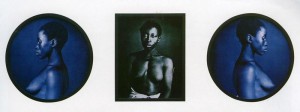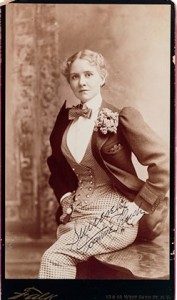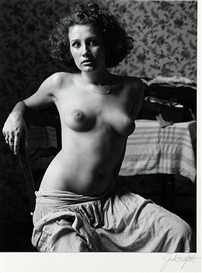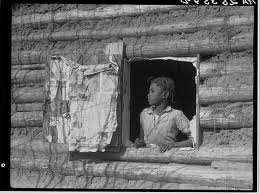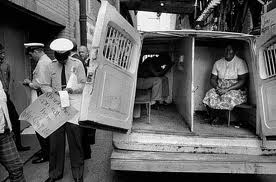Out [o] Fashion at the Henry Art Gallery
Carrie Mae Weems Sea Island Series
“Out [o] Fashion: Embracing Beauty” at the Henry Art Gallery, University of Washington, changes the way we see photographs. That is a big statement! But it is really true. The very title disrupts us before we even see the show, that missing “f,” those brackets! What does it mean? It means that we can’t assume fashion or beauty as fixed ideas, but as subjective constructs embedded in social contexts. After seeing this show I saw familiar images as if for the first time, and unfamiliar images with sharpened insights about the ways in which photography constructs beauty. A photograph is a dialogue between the photographer and the subject. It is also a conversation with a viewer. Even in cases of ethnographic images, in which the subject would seem to be simply a category, we could see oppressive constructs subverted by a self-aware subject.
Professor Deborah Willis, eminent artist, art historian, New York University Tisch School of the Arts, Professor, and MacArthur “Genius” Award Recipient, curated this provocative exhibition as the first resident scholar at the Henry Art Gallery, a wonderful idea initiated by Henry Art Gallery Director Sylvia Wolf. Professor Willis selected the exhibition from the extensive photography collection at the Henry that extends from the 1860s to the present, as well as from the Special Collections of the University of Washington Libraries. She spoke of how unusual the collections were because of their inclusiveness, particularly of both studio and commercial photography, apparently not a usual approach in collections on the East Coast.
One of my favorite examples of commercial photography was Benjamin Falk’s Portrait of Miss Rush, the Actress, (1892/1897) actually a cigar advertisement, but the elegant actress in her three piece male attire complete with bow tie, all in contrasting patterns, stuns us with her aplomb. She eyes us directly. In the catalog that photograph is provocatively juxtaposed to Jack Welpott’s Sabine, Arles France (1973), a photograph of a half-clothed prostitute who looks off to one side, much less sure of her place in the world. There are many examples of such juxtapositions, as well as multiple perspectives on one subject, such as the prostitute (of which there are three photographs that are wildly different).
The exhibition is divided into three themes, “Imagined Identities,” “Fashioning the Body,” and the “Speculative Pose.” In the very first gallery we are immediately confronted by Carrie Mae Weems’ work based on 1850s daguerreotypes of slaves. The slave has been stripped to the waist (like Sabine above, also pointing to sexual domination) but here the lacerations of slavery scar the breasts. When commissioned by Louis Agassiz, the famous professor of Natural History, the intent was to create dehumanized specimens. Weems has enlarged, reframed and developed the original photographs adding in this example, a blue tonality and two profiles. In the process we see this woman as a victim, and as a record of brutality, but also as a survivor whom we honor. (Carrie Mae Weems has a major retrospective exhibition that includes the series from which this work comes, Sea Islands (1992) at the Portland Art Museum until May 19.) Clearly, both the original photograph and Weems reinterpretation, as well as our own responses, are all “imagined identities.”
Willis catalyzes that dialog in her exhibition as well as in the catalog. Near the Weems’ photograph in the exhibition is a work by Edward Curtis, not of a native American, but of an African American woman whom he has dressed up (her breasts barely covered) and called African Queen (1898)! Nearby, photographs of Native Americans also surprise us. Fred E. Miller, who worked at the Bureau of Indian Affairs, married a half-Shawnee woman and was known as a friend of the Crow, took sensitive images like Crow Woman (1898/1912 printed 1985), a profile of a young woman in a patterned dress with long hair streaming down her back.
The second gallery of the exhibition “Fashioning the Body” again includes work by well known photographers, like Diane Arbus and Cindy Sherman, next to lesser known works like the surprising book art of Tamar R.Stone, Dress versus Woman (Plain Words for Plain People 2008). Stone embroidered in a small book and on an actual whalebone corset an amusing and also astonishing commentary on fashioning the body. The corset, of course, forced the body into dangerous constrictions of the internal organs. (The violence of foot binding is a parallel example of painful shaping for the sake of beauty, although that was not represented in the exhibition).
The biggest surprises for me, though, were the ways in which the exhibition enabled new seeing of familiar images, particularly in the third section “The Speculative Pose.” About Dorothea Lange’s “Waiting for the Relief Checks at Calipatria, California (1937), Professor Willis commented on how these men had put on hats and jackets to maintain self-esteem as they stood in line. About another Depression era photograph by Arthur Rothstein, Girl at Gees Bend (1937), she pointed out the contrast of this young girl’s poverty framed in a log cabin window to the image in the newspaper of a glamorous white woman that would face her inside when the window closed.
© Arthur Rothstein Girl at Gees Bend, 1937 on exhibit in Out [o’] Fashion, at the Henry Art Gallery. This image was taken as part of the Farm Security Administration (FSA) project in the 1930s.
Willis’ analysis of Bruce Davidson’s Black Americans (1963), from the Civil Rights era opened up layers of seeing. An arrested protestor, dressed in a flowered skirt and white blouse sits inside a police van; she is framed by its small compartment (her head reaches the roof). Her hands are folded in her lap and her eyes are looking outside the van to the right, away from the police, toward freedom. The door has not closed on her yet. At the left of the van, a policeman holds her sign, “Khrushchev can eat here Why Can’t We?” This extraordinary moment of capture and resistance, all contained in the woman’s calm posture, speaks volumes about the individual actions that led to massive change in the United States during the Civil Rights movement.
© Bruce Davidson Black Americans 1963 from the series “Time of Change: Civil Rights, 1961- 1965” on exhibit in Out [O’] Fashion, Henry Art Gallery
Another familiar artist, Lisette Model, is represented by Famous Gambler, Nice (1934 printed 1977). A large, well-dressed woman sits with her back to us on a verandah, a pot of tea in front of her. We experience in that wide back (her face is obscured) an enormous strength and presence. In spite of the cane that leans against a nearby chair, we know she is a woman who is confidently acting out her self-fashioned identity. Model is well known for her clandestine close ups in 1930s Nice; in this photograph, her subject dominates the photograph entirely.
Go and see this show and enjoy the famous artists (Weegee, Diane Arbus, Garry Winogrand, Imogen Cunningham, Marsha Burns, Irving Penn, Cindy Sherman, Lewis Hines), the famous people (Frederick Douglass, Robert Mapplethorpe, Bella Abzug, Martha Graham, Andy Warhol), even the contrived photograph of a traditional beauty (Cecil Beaton’s Marlene Dietrich).
Look at the details and you will start thinking in entirely new ways about photography, image making, construction of identity. Buy the catalog and think some more; it is a second exhibition: The ultra elegant Lady Diana Cooper by Cecil Beaton is opposite the African Queen by Edward Curtis in the catalog.
Deborah Willis has led us into a carefully cultivated garden of images that open up a world of possibilities for thinking about how we perceive beauty, how we perceive others, and how we frame ourselves. Nothing is “Out [O] Fashion” here.
This entry was posted on April 6, 2013 and is filed under Arican American history, Art and Activism, Art and Politics Now, art criticism.

